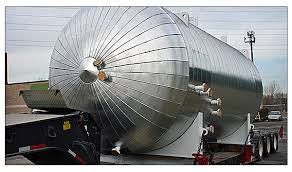Corrosion resistance performance of Incoloy alloy 825 in sulfuric acid
Sulfuric acid is a special chemical in comparison to other mineral acids. Considering the freezing point of acid solutions, it varies in apparent non-uniform manner. Peculiarities also increase to the corrosion zone, particularly where austenitic stainless steels are associated.
Acid concentration and temperature are essential factors however in some cases the availability of oxidizing or reducing contaminants, presence of chlorides, velocity or heat transfer may widely affect corrosion degree of alloys. Alloy offering good performance against sulfuric acid is Incoloy alloy 825.
Incoloy 825 has supreme resistance to sulfuric acid, particularly in 40% concentration in concentrated acid. Following the service experience, Incoloy alloy 825 offers significant resistance to corrosion in H2SO4 solutions of acid contents up to 40% at boiling temperatures, 78% acid content up to 80oC or 176oF and in all acid concentrations up to 65oC or 150oF. Incoloy alloy 825 is stabilized against carbide precipitation through titanium inclusion so it can be used in the as-welded condition.
Several lab tests were conducted showing that alloy 825 is a suitable construction material for Sulfex process dissolver tube. In this process that was never commercially introduced, stainless steel cladding of a nuclear power reactor fuel element is initially dissolved in a hot, dilute sulfuric acid solution and then uranium dioxide core is thereafter dissolved in nitric acid. The outcomes showed that alloy 825 was a perfect material of construction for dissolution of stainless steels as SS type 304 in sulfuric acid solution.
The corrosion rate of Incoloy alloy 825 is independent of particular heat of the alloy or whether the corrosion analyses were conducted in technical grade. Therefore subsequent tests were performed in technical grade.
The corrosion rate was based on condenser type utilized for the test apparatus. Tests run by using a Liebig condenser offered the same results in the boiling 31.8% solution irrespective of if the acid was only boiling or was sparged with air, although higher rates were received in the same acid content when a cold finger condenser was utilized.
Metal ions available in the acid from dissolution of the stainless steel act as oxidizing agent and reduces the corrosion rate by 10 times. This protection was independent of the content of dissolved stainless steel in the limit of 5 -50g/l of dissolved stainless steel. This influence was significantly higher than that received air bubbling the solution, certainly because of the limited solubility of oxygen in the boiling acid solution. It also shows that prevention can also be achieved by anodic protection.
Corrosion rates were almost same in the liquid and vapor on samples of ¼ inch thick plate welded by Tungsten inert gas process by using Incoloy filler metal 65.
As the surfaces of heating coils should be at temperature higher than boiling point of the sulfuric acid, heat transfer tests were performed. However heat flow accelerated the corrosion rate slightly, the corrosion rate was decreased by the availability of dissolved stainless steel due to oxidizing potential of ferric and other metal ions.


